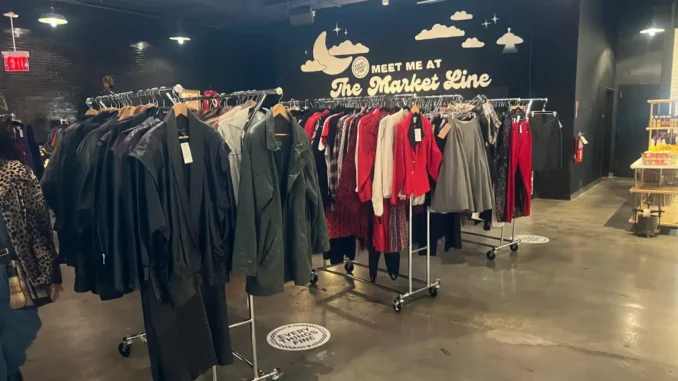
New York is suffering from food hall fatigue.
That’s the lesson of the unfortunate planned closing of the Market Line food hall at Essex Crossing on April 1. Developer Delancey Street Associates, however, blamed a “challenging economic environment” and, oddly, the long-over pandemic, for a recent vendors’ exodus.
It’s the first flop for Essex Crossing, the widely praised, mixed-use complex near the Williamsburg Bridge entrance that’s had great success with its other commercial components and apartment towers.
Market Line, set deep underground beneath the ground floor’s thriving Essex Market, is low on charm.
Visitors arriving down a long flight of stairs first encounter something like an apparel flea market before they get to the food.
But to this writer who covers, and loves equally, commercial real estate and the city’s restaurant scene, the reason for Market Line’s failure is more basic.
“Gourmet” food halls lost their specialness years ago. There are too many of them.
Eater.com, which long celebrated their proliferation, called them “oversaturated” two years ago – and that was before the recent openings of Market 57, Urban Space Union Square, the Hugh and more.
Some specialize in certain cuisines – e.g., the Singaporean-style at Urban Hawker, French at Le District, Italian at Eataly.
What most have in common is wild inconsistency – in food quality, service and even the hours a particular stand is open. Your food can turn cold before you eat it at peak times because there aren’t enough seats.
As the halls grew to more than 30 in Manhattan alone, the pandemic-scattered talent pools needed to staff them shrank.
So today’s authentic-seeming Singaporean noodles at Urban Hawker might taste like reheated leftovers tomorrow.
I once waited in line for arepas de rellena at still-thriving DeKalb Market Hall’s Arepa Lady for almost as long as a trip to the Jackson Heights original would have taken.
I never know what’s open at the Asian-themed Canal Street Market until I get there.
Some leasing brokers told Realty Check that the market for the halls was unlimited, due to landlords’ eagerness to fill large empty ground-floor spaces.
But one skeptic, Meridian’s James Famularo (who was with Eastern Consolidated at the time), said flatly, “There are way too many of them” – and that was six years ago.
The Todd English Food Hall at the Plaza is gone.
Several others might be on their last legs. It isn’t just at the luxury end – my last visit to the old city-run Moore Street Market in East Williamsburg, Brooklyn, found more stands closed than open.
I subscribe to the view of veteran New York restaurateur Stephen Hanson.
“The problem with food halls is, there’s no central management at any of them to control food quality or service,” Hanson observed.
“A landlord makes a deal with an operator, the operator leases a bunch of spaces in the hall, and that’s it. So a stand can be great today, terrible the next day, and maybe not there when you go a third time.”
Real Estate – Latest NYC, US & Celebrity News



